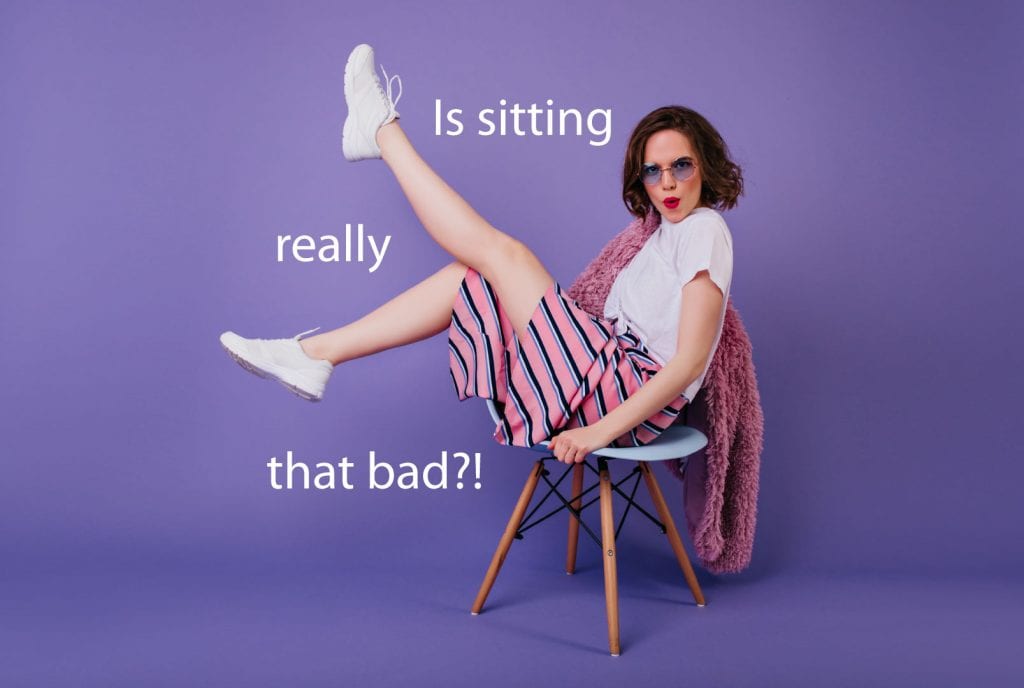A brief look into adaptive shortening.
Stop me if you have heard some phrases through the grapevine in the past few years, things like; 1) sitting is the new smoking, 2) sitting is harmful for your back and, 3) sitting for long periods is detrimental to your overall health. We have all experienced this rigmarole at some point. Let us think back to eggs as an example, they were good until they were bad and now they are back on track as acceptable. So, you might wonder, is sitting really that damaging?
I will endeavour to make this as clear as possible. Sitting can, in fact, cause pain and disease nevertheless, sitting is also a healthy, necessary and natural activity. Hmmm, these two statements seem to contradict each other, right? They certainly do!
Welcome to the human body!
The driving forces behind whether the action of sitting is positive or negative are time and position. To understand what I mean we will need to get acquainted with our anatomy.
If you had the opportunity to read my last post, you may remember that I mentioned how your body adapts to the forces and habits it experiences. The technical term for this process is called adaptive shortening. The practical definition goes something like this, ‘Your body, in the name of efficiency, will shorten and lengthen your muscles based on your daily physical diet’.
Simply put, our bodies change shape in accordance with our most common movements. Which actions you might ask? Well, the ones you carry out most during any given day.
Adaptive shortening is the main reason why so many of us find the deep squat or overhead motions uncomfortable. We rarely spend enough time on these positions hence rendering them inefficient, even though our rote anatomy shows we are more than capable of these movements.
Let us now address how sitting can be bad for you.
Take a look around your house, observe your office chair, get a tape measure to determine the height of all the furniture items you sit on in your home surroundings. How low do you sit your hips on a daily basis? Maybe you do not want to do that and have family looking at you strangely! Well, here are approximate measurements, the lowest seat in your house is often the toilet seat. On average the toilet seat is between 17-19 inches off the ground. Feel free to Google this information, there is a standard comfort height for toilets. Meanwhile, your other chairs probably range in measurements to approximately 20 inches off the ground.
With the above information in mind, do you see where I am going with this? Adaptive shortening dictates how your body readjusts in accordance with the positions you remain in.
If you spend most of your day on seating that is 17-20 inches off the ground, it clearly illustrates that your body will adapt and change shape to become proficient at being in those positions (See Figures 1 and 2).

Figure 1 
Figure 2
For reference, here is the ideal neutral posture:

Unfortunately, these postural deviations affect your ability to work those other less commonly used movements (think deep squat or lunge). Additionally, they force your muscles into unnatural positions and even push your organs into weird shapes. Do you think your liver enjoys being jabbed up into your ribcage? It most certainly does not. Furthermore, the real kicker is that these aberrations can stay with you when you stand back up. They become the new normal. But do not despair! We have the power to adjust by offering ourselves a little variation.
Sitting is something our bodies are actually quite good at and can be quite valuable for us in terms of strengthening and stretching our entire bodies. The first poses of yoga were specifically designed to allow the practitioner to sit and meditate for longer periods.
However, we cannot enjoy the healthy benefits of sitting by continuously being 17 inches off the floor.
We need to use our full range of motion and spend some time on the floor.. You can start for short periods, try 10-15 minutes a day. If you find this position very uncomfortable and it bothers your back or hips, sit on a pillow and allow your knees to fall slightly below your hips. Persevere for a few weeks as your body adapts incrementally to the new positions and you will notice more flexibility throughout your body. Just think, if you are watching TV and sitting on the floor, you are not being lazy, you are working out!
If you have any questions about any of the above or concerning more specific areas please feel free to reach out and contact me.
– Grant Clark




